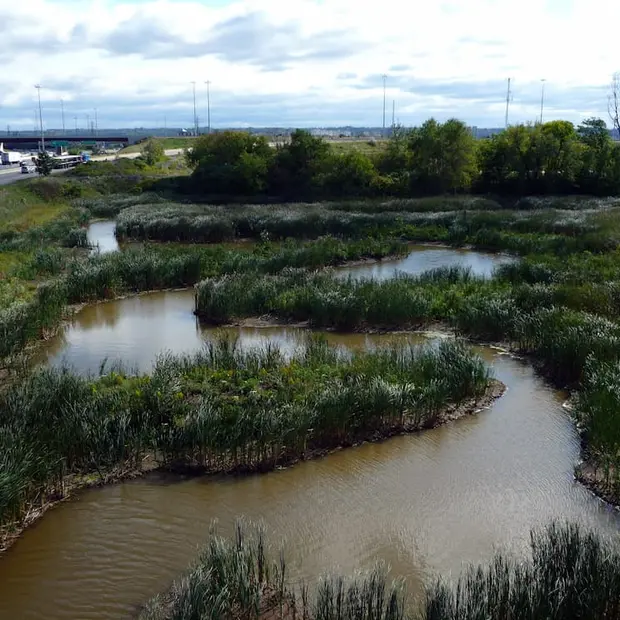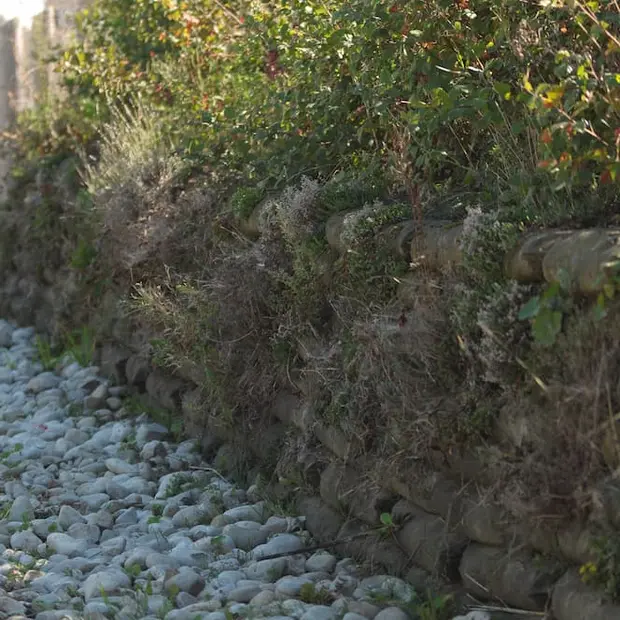Ecological Restoration
Practical, progressive solutions for ecological restoration and preservation.
Dougan Ecology combines landscape architecture and ecological expertise to pioneer creative tools for habitat protection, restoration, and creation in urban and urbanizing, protected, and natural environments.

Landscape plans set apart by attention to ecological principles
Ecological landscape design has been a key component of a diversity of projects at Dougan Ecology for more than 15 years. Our services include:
- Buffer plantings
- Habitat restoration
- Natural channel design and revegetation
- Wetland enhancement and restoration
- Native seeding
- Wildlife habitat structures
- Bioengineering
- Mitigation plans
- Living fences
- Mini forests
- Biodiversity enhancement
- Wetland seedbank salvage
- Contract administration
- Post-construction monitoring
We develop inspiring designs to enhance a site’s ecological integrity, while integrating your vision and goals.

You can leave a legacy of thriving ecologies.
Your care and passion make a difference. We can help - from landscape design planning to project monitoring post-installation. Together, let’s create beautiful, sustainable places!

Frequently asked questions about ecological restoration
Ecological restoration repairs degraded ecosystems by reintroducing native species, removing invasive species and restoring natural processes. It supports biodiversity, improves ecosystem services, and builds climate resilience.
Dougan Ecology offers full-service ecological restoration planning, design, and implementation to help restore the health of your land.
Native species support local biodiversity and ecological function. Planting regionally adapted trees, shrubs, and grasses fosters wildlife habitat, pollinator networks, soil stabilization, and improved water quality. Native plant restoration is key to long-term restoration success and supports sustainable habitat restoration in Ontario landscapes.
Habitat restoration combines physical design, planting, and ecological monitoring. Habitat restoration may include grading, soils preparation, species selection, hydrological corrections, and monitoring. Projects like stream restoration, wetland rehabilitation, or prairie planting are designed to reconnect ecological processes and enhance biodiversity for municipalities and landowners.
Dougan Ecology provides comprehensive restoration services tailored to your site’s ecological needs and project goals.
Start with a site assessment to understand current conditions, followed by a tailored restoration plan, native plant installation, and ongoing care.
Dougan Ecology will guide you through every step, from ecological assessment to native planting and long-term monitoring.
You need an experienced team with ecological expertise and regulatory knowledge.
Dougan Ecology is a trusted Ontario-based ecological consulting firm with decades of experience restoring wetlands, woodlands, meadows, and other sensitive habitats.
Dougan Ecology provides expert ecological assessments and restoration plans that ensure your project complies with wetland and woodland protection regulations, helping you navigate approvals smoothly.
Riparian restoration recreates healthy buffer zones along waterways. It can include regenerating native trees, shrubs, and grasses to stabilize banks, shade streams, support wildlife, and enhance water quality. This is often a critical step in stream or watershed restoration projects, especially in agricultural and urban settings.
Plant species selection for restoration efforts includes matching site conditions and ecological goals. Plant selection depends on soil type, hydrology, sun exposure, and ecological objectives. Restoration plans typically include a mix of native shrubs, perennials, trees, and grasses tailored to site-specific ecological niches and long-term resilience.
Ecological restoration benefits emerge over several years. Some results can be observed immediately. Tree canopy and understory may establish in 3–5 years, while soil and hydrological improvements may take longer. Full functional recovery of wetlands or woodlands can require upwards of a decade. Monitoring helps adaptively manage throughout.
Urban ecological restoration is restoring habitat within developed areas. Urban restoration reintroduces natural features like mini forests, green buffers, or pollinator gardens into parks, schools, or infrastructure corridors. This supports biodiversity, public engagement, and community resilience while accommodating urban constraints.
An ecological restoration plan is a blueprint combining ecology, design, and implementation of restorative actions to create thriving ecological spaces. Restoration plans detail site assessment, ecological goals, planting palettes, schedules, construction methods, monitoring, and maintenance strategies. They serve as roadmaps for effective execution and long‑term success. Dougan Ecology’s restoration ecologists bring science-based solutions to your project, ensuring measurable ecological improvements.
Ecologists and landscape designers, such as those at Dougan Ecology in Guelph, Ontario, come alongside ecological restoration projects, providing services from assessment to custom reporting, planning, implementation, and monitoring.
Native plants are species that occur naturally in a region without human introduction. They are essential to healthy ecosystems, supporting soil health, water retention, and native wildlife.
At Dougan Ecology, we specialize in the use of native plants in both ecological restoration and landscape design. Our planting plans are tailored to local site conditions, enhancing ecological function while meeting conservation goals and regulatory requirements.
Projects involving native habitat restoration, wetland enhancement, or pollinator-friendly planting may qualify for funding.
Dougan Ecology helps identify eligible grants and prepares detailed, fundable restoration proposals.
Yes. Restoration projects can support biodiversity offsetting and contribute to carbon sequestration.
Dougan Ecology develops restoration strategies that align with offset and sustainability goals, helping clients meet policy or ESG commitments.
